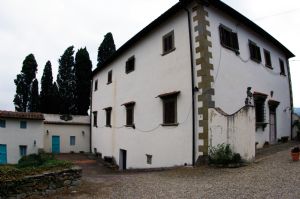Caprese, pizza margherita and pesto: where would Italian food be without basil?
It is the garnish that guarantees the provenance of your plate. But there is a
great deal of science behind Italy’s centuries-old art of cooking. Tiare Dunlap
tells us about the molecular motives behind Liguria’s traditional pesto.
The time and care Italians put into crafting their food
is often viewed as symptomatic of their devotion to a distinctively elevated
quality of life. No matter what situation, quality always comes before
expediency (or so I tell myself whenever waiting more than an hour for
something that should take 10 minutes). Italians do things at their own pace,
and if you are going to spend any amount of time here, this is something you
must accept. However, when it comes to their world-famous cuisine, Italians
take their sweet time not because of their culture, but because the molecular
composition of their ultra-fresh ingredients demands it.
For example, any John or Jane
could whip up some pesto at home with basil, olive oil, pine nuts, pecorino
cheese, and salt. It’s a great recipe to impress those who are less kitchen
literate than you and lets you feel you are being healthy (green = good for you
and the earth). However, when you leave the comfort of your home and food
processor for the greener culinary pastures of Italy’s Ligurian coast, you will
see that the flavor you produce at home does not even live in the same neighborhood
as the party an authentic pesto will no doubt throw on your taste buds. The
difference isn’t in the siesta, it’s in the science.
Pesto was created by accident
when an ancient Ligurian used olive oil to preserve the basil leaves that
abound on his region’s coastline. To have such an incredible feat of gastronomy
result simply from the effort to store an abundant herb makes me wonder what
culinary triumphs we are missing by having refrigerators.
The name pesto comes from the
history of grinding the fresh ingredients into a silky green sauce using a
mortar and pestle. In today’s fast-paced world where the minutes spent grinding
pesto with a stone apparatus would seem better spent tweeting, most people
gladly opt for a blender or food processor. Although electing to grind herbs
together using a mortar and pestle may feel like lighting a fire with two
sticks while you have a lighter in your pocket, the choice of mixing apparatus
influences both flavor and consistency.
First off, grinding roasted pine
nuts and coarse salt into a velvety mixture will provide a creamy foundation to
showcase your basil’s flavor. Each basil leaf contains thousands of microscopic
glands filled with flavorful essential oils that cover the surface of the herb.
So-called young leaves harvested from the top of the plant generally have a
larger proportion (as much as five times more) of the aroma compounds than the
more mature leaves found at the plant’s base.
The differences between crushing,
shearing, and slicing produce varying proportions of intact and broken cells.
The more thoroughly the cells are broken, the more the individual basil leaf’s
compounds mix and are infused with the flavor of the olive oil. A coarse pesto
mixture will taste like a mouth full of leaves; a well-blended pesto will have
a more ‘evolved’ flavor that is at once herbaceous, nutty, and a little cheesy.
Most of all, your pesto will have a smooth and supple texture.
So next time you get a craving
for some of the green stuff, remember to ditch the blender and make the
Ligurians proud.







